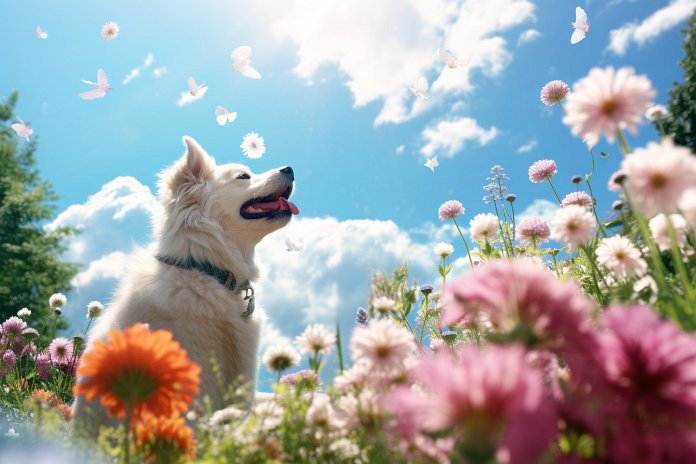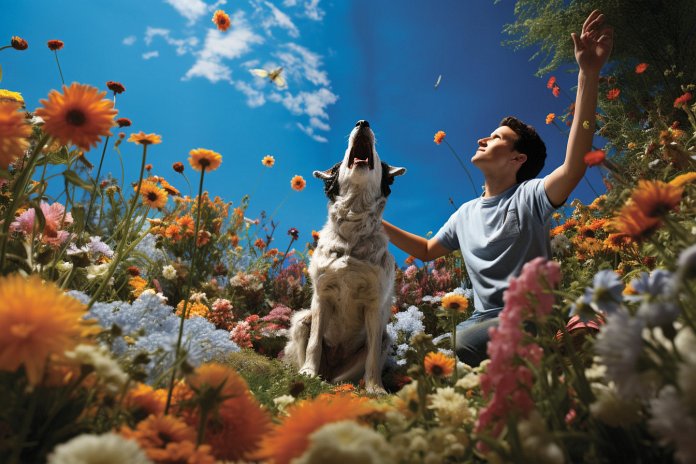
Dogs struggle to understand our words, but studies have shown that they can learn to understand gestures and facial expressions. While we can’t have a conversation with our dogs, we can teach them gestures to communicate our emotions and desires. This helps to maintain a loving relationship with our pets.
Signs Your Dog Understands Your Gestures
Dogs have learned to interpret certain gestures and facial expressions because of their long history with humans. Depending on the gesture, dogs will react differently. Angry gestures may cause them to shy away, while sad gestures elicit empathetic behaviors. Happy or excited gestures will make dogs happy and excited as well. Dogs also pay attention to pointing and turning our heads, indicating that they understand these gestures and want to know what we’re looking at.
Body Language
Signs that your dog understands your gestures include being alert, barking, raising their ears, whimpering, averting eyes, and ears standing up. Other cues are empathetic behaviors, staring where you are looking, following the direction of your pointing, whimpering or crying with you, avoiding eye contact when mad, and cuddling with you when upset.
The History Behind Dogs Understanding Gestures
Dogs were domesticated from wolves over 38,000 years ago, which explains their ability to pick up on our gestures and behaviors. They associate certain gestures with specific emotions or actions and react accordingly. This shows how dogs have become man’s best friend, as they can understand and respond to our feelings and actions.
The Science Behind Gestures and Dogs
Studies have shown that dogs have the intellectual capabilities of a 2-year-old child and can understand human pointing gestures without much learning time. Dogs can also understand head-turning and gazing, but struggle when the index finger points in a different direction from the arm. Although dogs can’t verbally express that they understand gestures, their reactions indicate their understanding and sometimes their attempts to help.
Training Your Dog to Understand Gestures
While dogs already understand many gestures, we can enhance their understanding through repetition and practice. Starting with both a verbal command and a gesture and gradually removing the verbal command can help dogs associate the gesture with a desired action. To ensure dogs understand our pointing, it’s important to keep our hands still and face the direction we’re pointing.
“Speak without words: How gestures can bridge the communication gap with your dog”

Tips & Things to Know
1️⃣ Dogs can understand gestures and facial expressions: While dogs may not understand our words, they have evolved to understand certain gestures and facial expressions that we use to express emotions or feelings. This means that we can communicate with our dogs without using words.
2️⃣ Dogs react differently to different gestures: Depending on the gesture you make, your dog will react differently. If you make an angry gesture, your dog may shy away and avoid eye contact. If you make gestures indicating sadness, your dog may show empathy by offering cuddles or crying with you. If you make gestures indicating happiness or excitement, your dog may react with excitement as well.
3️⃣ Training can help improve understanding: While dogs already understand many of our gestures, training can help them understand more. By using repetition and practice, you can teach your dog to associate gestures with specific commands or actions. It’s important to keep your gestures consistent and avoid pointing in a different direction from the way your arm is raised.
Frequently Asked Questions, Answered ✅
1. Can dogs understand gestures?
– Yes, studies have shown that dogs can learn to understand certain gestures and facial expressions that we use to express emotions or feelings.
2. How do dogs react to angry gestures?
– Dogs may shy away, avoid eye contact, and whimper or cry when they see their owners making angry gestures.
3. How do dogs react to sad gestures?
– Dogs that understand their owner’s sad gestures may offer cuddles or cry along with their owners.
4. How do dogs react to happy or excited gestures?
– Dogs may jump up and down or give excited barks or yips when their owners display happy or excited gestures.
5. How can we train dogs to understand gestures?
– Repetition and practice can help dogs associate gestures with commands or tricks. It’s important to keep our hands still and face the direction we’re pointing to help dogs understand our pointing gestures.